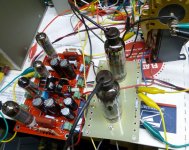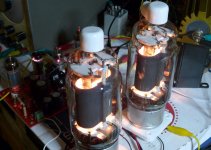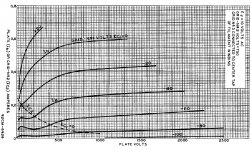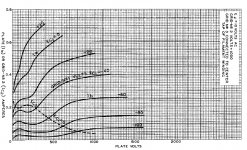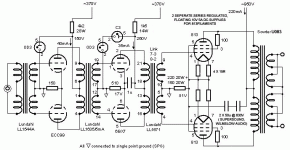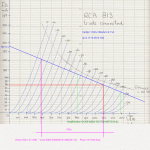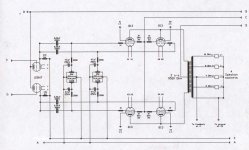For a while now I've a box of 813's under the bed, and as one does I've thought about using them to build a gurt big amp. The power supply is mostly sorted out,however the big obstacle here is the OPT's.
Before I can wind them or get them wound I need to know the Z pri etc. The 813 datasheet has specs for AF amp & modulator, class AB1, which gives a Z pri of 19k. This sort of amp isn't really going to be hifi at that power OP, speakers would have to be big subs or PA gear, but to get decent specs up to 100w say,what Z pri are we looking at?
Any advice thoughts are welcome. I am aware of the lethal voltages at play here and it being a bit of a daft idea, it's got to be done though,just for the craic.
TFL, Andy.
Before I can wind them or get them wound I need to know the Z pri etc. The 813 datasheet has specs for AF amp & modulator, class AB1, which gives a Z pri of 19k. This sort of amp isn't really going to be hifi at that power OP, speakers would have to be big subs or PA gear, but to get decent specs up to 100w say,what Z pri are we looking at?
Any advice thoughts are welcome. I am aware of the lethal voltages at play here and it being a bit of a daft idea, it's got to be done though,just for the craic.
TFL, Andy.
it's been done. Have a look at Chambers work. chambonino.com He did a pretty good job of it, as winding the transformers is tough. It's not an easy project, which is why I collected 10V CT transformers - 10A each to begin with. You need one for each channel to begin with. Sowters make a transformer for this, but it's not cheap! I also got a massive ship-shore power supply for a transmitter to fire it up!
Last edited:
At one time I had a box full of 813's and other large transmitting tubes. I spent some time playing with the 813's and found that they really want high voltages at low currents, resulting in an OPT with a rather high impedance. As you surmised an OPT like this will be large, expensive and not likely to be of "HiFi specs" unless a custom high cost OPT is built by a qualified winder. I personally decided that my "BIG ONE" will be using TV sweep (line output) tubes for a power level of 500 WPC using off the shelf OPT's.
If you must use 813's you would probably be best off with four tubes per channel at about 1500 volts. See the left most column on the data sheet for class AB1 modulator. With 4 tubes the load impedance would be in a more manageable 4600 to 5000 ohm range.
My testing revealed that 813's will run in AB2, but don't provide much more power than AB1 when heavily loaded. I tried various OPT's from 5000 ohms to 13200 at up to 1500 volts but never got much over 120 watts from a pair.
The little 12GB5 / XL500's were making 120 watts into 3300 ohms from about 550 volts.
A pair of 4D32 transmitting tubes are rated for 125 watts into 3000 ohms on 600 volts, a much easier build that still has the fat transmitting tube look. I have seen power levels in the 150 to 200 watt range with a little spec bending.
If you must use 813's you would probably be best off with four tubes per channel at about 1500 volts. See the left most column on the data sheet for class AB1 modulator. With 4 tubes the load impedance would be in a more manageable 4600 to 5000 ohm range.
My testing revealed that 813's will run in AB2, but don't provide much more power than AB1 when heavily loaded. I tried various OPT's from 5000 ohms to 13200 at up to 1500 volts but never got much over 120 watts from a pair.
The little 12GB5 / XL500's were making 120 watts into 3300 ohms from about 550 volts.
A pair of 4D32 transmitting tubes are rated for 125 watts into 3000 ohms on 600 volts, a much easier build that still has the fat transmitting tube look. I have seen power levels in the 150 to 200 watt range with a little spec bending.
Attachments
I use a pair of 813's in P-P, triode strapped, at approx. 900VDC, the Tribute OPT's have an impedance of 10K (fairly high) and I get about 45 to 50 Watts "clean".
Drive them via an Interstage fed by a 300B. Works quite good!
Drive them via an Interstage fed by a 300B. Works quite good!
Not at 2.5Kv it's not!With 4 tubes the load impedance would be in a more manageable 4600 to 5000 ohm range.
John was getting more than 1kw from 4 of them at 2.5Kv and a A-A load of 9.5K.
He is a pretty well known guy in the UK, and has made some of the most powerful valve amps ever made.
I've had him on the phone a few times.
The bloke is a mine of info, particularly when it comes to making stuff like this reliable and winding tranformers to go with it.
He's also a great laugh!
Biggest problem is knowing what to do with 1kW of valve amp, - just 400W of heat is already a beast!

Last edited:
Thanks all. I know John Chambers,lives up the road and am familiar with his 1000w prototype, he never finished AFAIK. It looks like he took the 19k spec from the section AF & modulation etc and halved it.
813's present a problem as tubelab says as they need a high load, it'd be better from an OPT winding POV to parallel KK88's or other beefy valves, thing is I haven't got a box full of KT88's.
I have two sets of C cores that might make half decent OPT's, at 50hz they're about 725w, this'll lower obviously as frequency goes down, more like 350w.
I'm reticent about using the 813's triode strapped or in SE Class A.
I'll give some more thought to this and let you all know the results
813's present a problem as tubelab says as they need a high load, it'd be better from an OPT winding POV to parallel KK88's or other beefy valves, thing is I haven't got a box full of KT88's.
I have two sets of C cores that might make half decent OPT's, at 50hz they're about 725w, this'll lower obviously as frequency goes down, more like 350w.
I'm reticent about using the 813's triode strapped or in SE Class A.
I'll give some more thought to this and let you all know the results
what a laugh!I know John Chambers,lives up the road
small world isn't it? 😀
btw, I wouldn't use 813 as triodes either.
As I mentioned, Sowter advertise a transformer 80W UL push pull at 7K ohm, which presumably means not exceeding 1Kv and quite gentle drive.
However it looks like a great quality 80W doesn't it?
Probably pretty clean with low IMD and a good deal of class A zone.
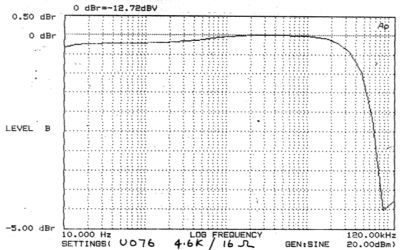
It is indeed.small world isn't it?
Thanks for that plot, thing is, each 813 takes 50w to heat, seems a waste to not get every last watt out of em. Sowter do some bigger OPT's, bit pricey though or I can get OPT's made, for a price, we'll see.
Thanks for your IP, Andy.
The 304tl seems like a much better candidate. They even give figures for ab1 and ab2 with reasonable impedances.
I suggest don´t just "ask at a Forum" or browse old magazines but take the straightforward approach: graphically *design* it out of datasheet plate curves, which is what anybody properly answering should do too.For a while now I've a box of 813's under the bed, and as one does I've thought about using them to build a gurt big amp. The power supply is mostly sorted out,however the big obstacle here is the OPT's.
Before I can wind them or get them wound I need to know the Z pri etc. The 813 datasheet has specs for AF amp & modulator, class AB1, which gives a Z pri of 19k.
Typically there will be a range of acceptable load lines , you decide which one fits your needs best.
Quoting a number pulled out of thin air, vaguely remembered, or coming from same tubes but under different conditions is useless.
There's absolutely no reason you have to follow the recommended loading in the datasheet. Draw some lines and figure out what some loads will do.
I've been playing with a 100TH SE amp with a 5k load (you won't see that recommended in the datasheet) and I'm getting great results at 700V. I plan to bump that to 750V, but not beyond that.
Looking over the 813, if I were doing this amp, I'd run them at 1000V and 90mA or so into a 5k load plate-to-plate. Mosfet grid driver. Screen somewhere between 400 and 750V.
I'd do local feedback that doesn't go around the output transformer, similar to my Corona SE amp but adapted to push-pull. I am assuming that a big output transformer like this wouldn't have much excess bandwidth and so global feedback would be small or I might leave it out entirely (the SE amp experiments gave a DF > 10 without feedback around the OT). It looks like this operating point would give 250W or so and the composite curves for the output stage would be ridiculously linear up to very high output.
You could get more power for sure if you bias colder and at higher B+, but you would sacrifice linearity.
I just don't know who makes a 250W+ 5k transformer.
I've been playing with a 100TH SE amp with a 5k load (you won't see that recommended in the datasheet) and I'm getting great results at 700V. I plan to bump that to 750V, but not beyond that.
Looking over the 813, if I were doing this amp, I'd run them at 1000V and 90mA or so into a 5k load plate-to-plate. Mosfet grid driver. Screen somewhere between 400 and 750V.
I'd do local feedback that doesn't go around the output transformer, similar to my Corona SE amp but adapted to push-pull. I am assuming that a big output transformer like this wouldn't have much excess bandwidth and so global feedback would be small or I might leave it out entirely (the SE amp experiments gave a DF > 10 without feedback around the OT). It looks like this operating point would give 250W or so and the composite curves for the output stage would be ridiculously linear up to very high output.
You could get more power for sure if you bias colder and at higher B+, but you would sacrifice linearity.
I just don't know who makes a 250W+ 5k transformer.
you are probably familiar with this stuff?
I have to assume.
The Lundahl transformer coupled thing seems good, and of course I guess you could always use 2 series transformers in the output stage - eg partridge to get the A-A load easier so long as you gap them appropriately.
I have to assume.
The Lundahl transformer coupled thing seems good, and of course I guess you could always use 2 series transformers in the output stage - eg partridge to get the A-A load easier so long as you gap them appropriately.
Attachments
The 304TL does look good, they're £200 each though. Here in the UK a lot of the less common valves are hard to get, you have a lot more cheap options in the USA.
I've done some loadline analysis, all it's done is confirm the specs already given,it's not my strong point, I'm more of a tinkerer, hands on, bench testing. In a nutshell there's obviously two basic approaches 1) lowish power OP low distortion. 2) Max power OP, don't worry about THD. I'm vacillating between the two, hence this thread.
Thanks for that SS, that's the sort of info I'm after.
I've seen most of those graph's but missed the Lundahl schematic.
The LL1688 is interesting, it can be configured for various primary impedances too enabled the building of several prototypes.Thanks for pointing that out.
I've done some loadline analysis, all it's done is confirm the specs already given,it's not my strong point, I'm more of a tinkerer, hands on, bench testing. In a nutshell there's obviously two basic approaches 1) lowish power OP low distortion. 2) Max power OP, don't worry about THD. I'm vacillating between the two, hence this thread.
Thanks for that SS, that's the sort of info I'm after.
I've seen most of those graph's but missed the Lundahl schematic.
The LL1688 is interesting, it can be configured for various primary impedances too enabled the building of several prototypes.Thanks for pointing that out.
The LL1688 is interesting, it can be configured for various primary impedances too enabled the building of several prototypes.Thanks for pointing that out.
That's what I was thinking. You could do a lower-powered Class A or a higher-powered Class AB. You could breadboard both and then decide.
Andy, I would have thought the OPT stress voltage capability would be quite important, since you are likely going to push significantly past 1kVdc B+, and the OPT may have non-negligible leakage inductance, and you would be operating at least class AB1. You don't indicate buying an off-the shelf OPT, so the insulation spec is at least up to you, and you should ensure they are sufficiently IR tested imho.
Are you stuck with a speaker impedance? If not then to a first order, you could allow at least 2:1 primary impedance variation whilst setting up the amp, in order to see what primary impedance suits best - especially if there are some speaker side taps.
Are you stuck with a speaker impedance? If not then to a first order, you could allow at least 2:1 primary impedance variation whilst setting up the amp, in order to see what primary impedance suits best - especially if there are some speaker side taps.
Exactly. I don't think I'll be able to afford the Lundahl or Sowter OPT's but their specs gives me a starting point. I have a friend who's an experienced OPT winder working on a design at present, hopefully. He's a bit worried about the high voltages too.That's what I was thinking. You could do a lower-powered Class A or a higher-powered Class AB
As it is I can either wind my own OPT's using C cores or I'll have to buy some custom jobbies. I have experience winding transformers, but not OPT's. It may take a few goes to get it right, we'll see. The trfmr's I've wound so far have passed 10kv insulation tests, that's without varnish impregnation, so homemade OPT's might be ok.
Having said all that, the few times I've worked with 1kv plus voltages I've had the odd bang and magic smoke, I'm aware working with this sort of EHT presents it's own challenges. I think with this first amp it'd be a good idea to build a 350w ish prototype at around 1250v EHT and get that right before building a 500w or bigger monster. I'm sure it'll be a challenge, but that's what gets us out of bed building valve amps, mucking about with electrickery.
With all this in mind a flexible OPT design makes sense. My experience so far building valve amps is to leave yourself wiggle room, make the transformers with plenty of taps and extra voltages. BTW, how does leakage L effect EHT or vice versa? Cheers all, Andy
Last edited:
I'd recommend forming a view of how you could suppress over-voltage events arising from either a part fault, or a loss of conduction path (eg. all valves in cut-off), or an instability/snivet.
Leakage L then only concerns stability margins, where you can always operate at lowered voltage to confirm bullet-proof behaviour no matter what the load or drive conditions.
Leakage L then only concerns stability margins, where you can always operate at lowered voltage to confirm bullet-proof behaviour no matter what the load or drive conditions.
I've already got numerous protection circuits in mind in case of faults, IE reverse avalance diodes from anodes to gnd, over current protection, non bias voltage protection etc etc. The EHT fusing presents a challenge though it's not insurmountable. Got you re leakage L,cheers Tim.
I realised David over on El Paso built an 813 amp, I've been watching his old video's for idea's.
I realised David over on El Paso built an 813 amp, I've been watching his old video's for idea's.
Remember that the voltage on the plates of an output tube will reach 2 X the B+ voltage in NORMAL (not clipped) operation into a resistive load. Speakers are NOT resistive loads.
Sometimes amps get driven into clipping, especially when the Dumm Blonde One plugs his guitar preamp into it and "sets the controls for the heart of the sun." A guitar speaker often has it's resonant impedance peak within the guitar's frequency range. My testing revealed voltage peaks over 2500 volts in a typical 35 watt KT88 push pull guitar amp running on 420 volts before clipping, and over 5KV when driven about 10 dB into clipping.
I already have some "400 watt @ 20 Hz" OPTs which are 1250 ohms, so my path is chosen, 600 to 650 volts of B+ and as many TV sweep tubes as needed to make 500 WPC.
A read through of this thread may be a good idea:
Tube output protection
Sometimes amps get driven into clipping, especially when the Dumm Blonde One plugs his guitar preamp into it and "sets the controls for the heart of the sun." A guitar speaker often has it's resonant impedance peak within the guitar's frequency range. My testing revealed voltage peaks over 2500 volts in a typical 35 watt KT88 push pull guitar amp running on 420 volts before clipping, and over 5KV when driven about 10 dB into clipping.
I already have some "400 watt @ 20 Hz" OPTs which are 1250 ohms, so my path is chosen, 600 to 650 volts of B+ and as many TV sweep tubes as needed to make 500 WPC.
A read through of this thread may be a good idea:
Tube output protection
- Home
- Amplifiers
- Tubes / Valves
- Daft 500w valve amp - advice.
